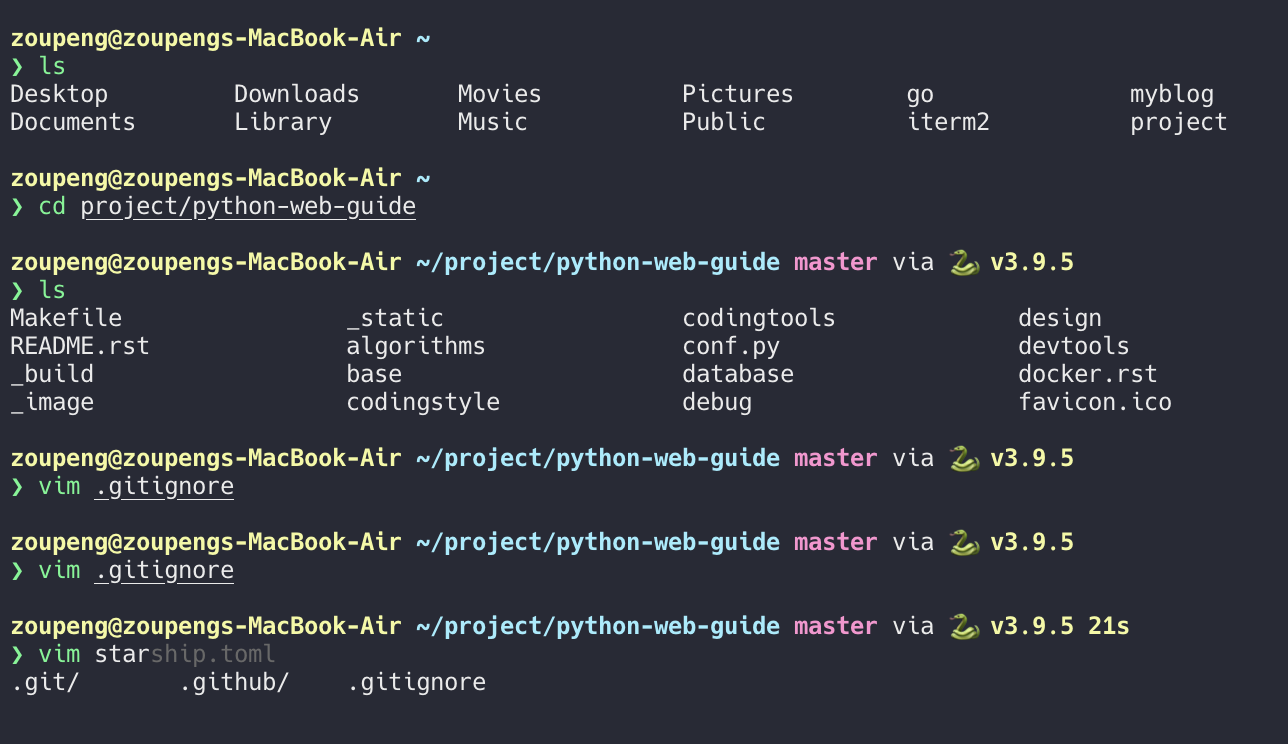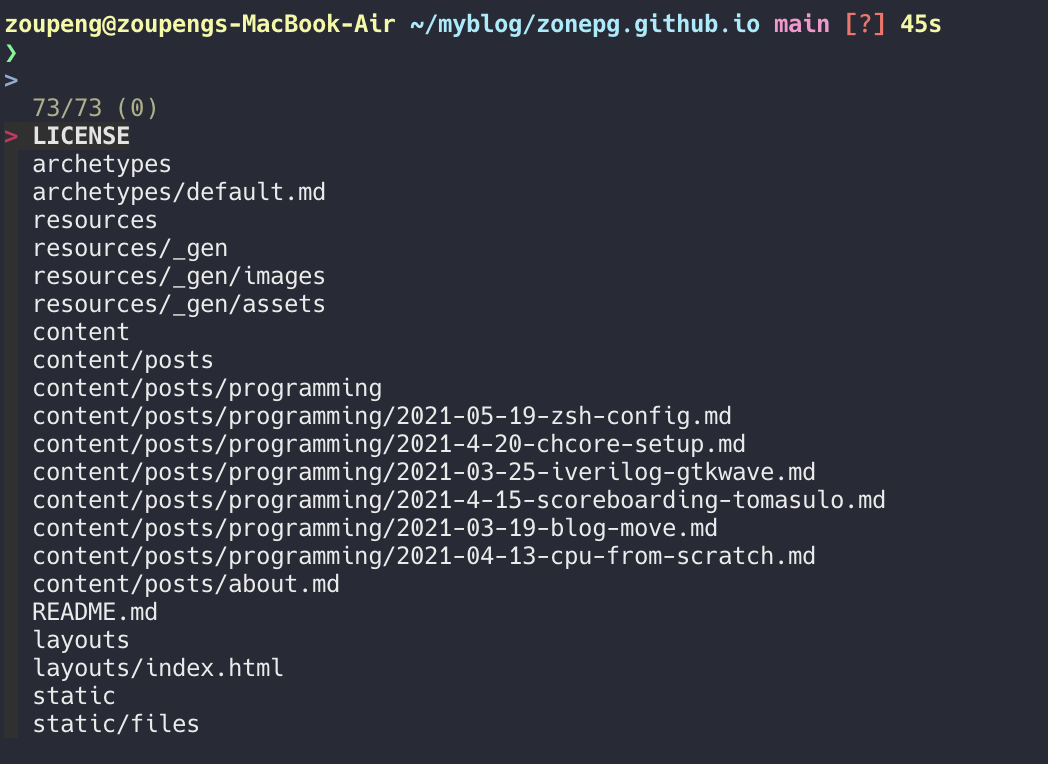轻量、快速的zsh
之前有过在 ubuntu 折腾 zsh 的经历,使用 oh-my-zsh,这种比较笨重的框架用起来有点卡卡的,遂明确自己的需求,自己动手找了解决方案。
自己的需求是一个轻量、快速、美观的 shell,功能包括以下:
- 支持 vim
- 配色优雅、好看
- 展示 git 分支信息
- 补全、提示
- 搜索
将 zsh 稍加配置,最终效果如下:

最终效果图
vim 支持
在 .zshrc 中加入以下配置,可以让你的 zsh 支持vim,这里同时使光标在不同编辑模式下显示不用效果,以及 tab 切换补全。
# Basic auto/tab complete:
autoload -U compinit
zstyle ':completion:*' menu select
zmodload zsh/complist
compinit
_comp_options+=(globdots) # Include hidden files.
# vi mode
bindkey -v
export KEYTIMEOUT=1
# Use vim keys in tab complete menu:
bindkey -M menuselect 'h' vi-backward-char
bindkey -M menuselect 'k' vi-up-line-or-history
bindkey -M menuselect 'l' vi-forward-char
bindkey -M menuselect 'j' vi-down-line-or-history
# Change cursor shape for different vi modes.
function zle-keymap-select {
if [[ ${KEYMAP} == vicmd ]] ||
[[ $1 = 'block' ]]; then
echo -ne '\e[1 q'
elif [[ ${KEYMAP} == main ]] ||
[[ ${KEYMAP} == viins ]] ||
[[ ${KEYMAP} = '' ]] ||
[[ $1 = 'beam' ]]; then
echo -ne '\e[5 q'
fi
}
zle -N zle-keymap-select
zle-line-init() {
zle -K viins # initiate `vi insert` as keymap (can be removed if `bindkey -V` has been set elsewhere)
echo -ne "\e[5 q"
}
zle -N zle-line-init
echo -ne '\e[5 q' # Use beam shape cursor on startup.
preexec() { echo -ne '\e[5 q' ;} # Use beam shape cursor for each new prompt.
工具
zinit
使用 zinit 作为插件管理工具,用法简单,且快。 根据官方 wiki 安装好后,我们的需求是 高亮/补全/提示,安装以下三个插件。
zinit light zsh-users/zsh-completions
zinit light zsh-users/zsh-autosuggestions
zinit light zsh-users/zsh-syntax-highlighting
starship
我们使用startship配置主题,可以感受以下它官网主页的介绍:
The minimal, blazing-fast, and infinitely customizable prompt for any shell!
这是我的.config/starship.toml配置文件:
add_newline = true
[directory]
truncation_length = 0
truncate_to_repo = false
[git_branch]
format = "[$branch]($style) "
# format = "[$symbol$branch]($style) "
[golang]
format = "[$symbol()]($style)"
[python]
python_binary = "python3"
[cmd_duration]
format = "[$duration]($style) "
min_time = 3_000
[character]
success_symbol = "[❯](bold green)"
error_symbol = "[✗](bold red)"
vicmd_symbol = "[V](bold blue)"
[username]
style_user = "yellow bold"
style_root = "black bold"
format = "[$user@]($style)"
disabled = false
show_always = true
[hostname]
ssh_only = false
format = "[$hostname](bold yellow) "
disabled = false
[package]
disabled = true
[gcloud]
disabled = true
[aws]
disabled = true
现在 zsh 就能达到上面的效果了。
fzf
再加入 fzf 搜索支持,包括文件搜索,文件夹切换,历史命令搜索。
brew install fzf
# To install useful key bindings and fuzzy completion:
$(brew --prefix)/opt/fzf/install
brew install ripgrep
brew install --HEAD universal-ctags/universal-ctags/universal-ctags
brew install the_silver_searcher
brew install fd
安装后,需要将key-bindings.zsh与completion.zsh加入.zshrc
mac下的option键与普通键盘alt键不太一样,windows下 alt+c 键是 <M-c>,需要去key-bindings.zsh中修改键位绑定option-c即ç。
这是我的路径:
/opt/homebrew/opt/fzf/shell/completion.zsh
/opt/homebrew/opt/fzf/shell/key-bindings.zsh
使用ctrl-r, ctrl-t, option-c 即可使用命令搜索、文件搜索、文件夹切换。ctrl-n, ctrl-p进行选择。

fzf搜索